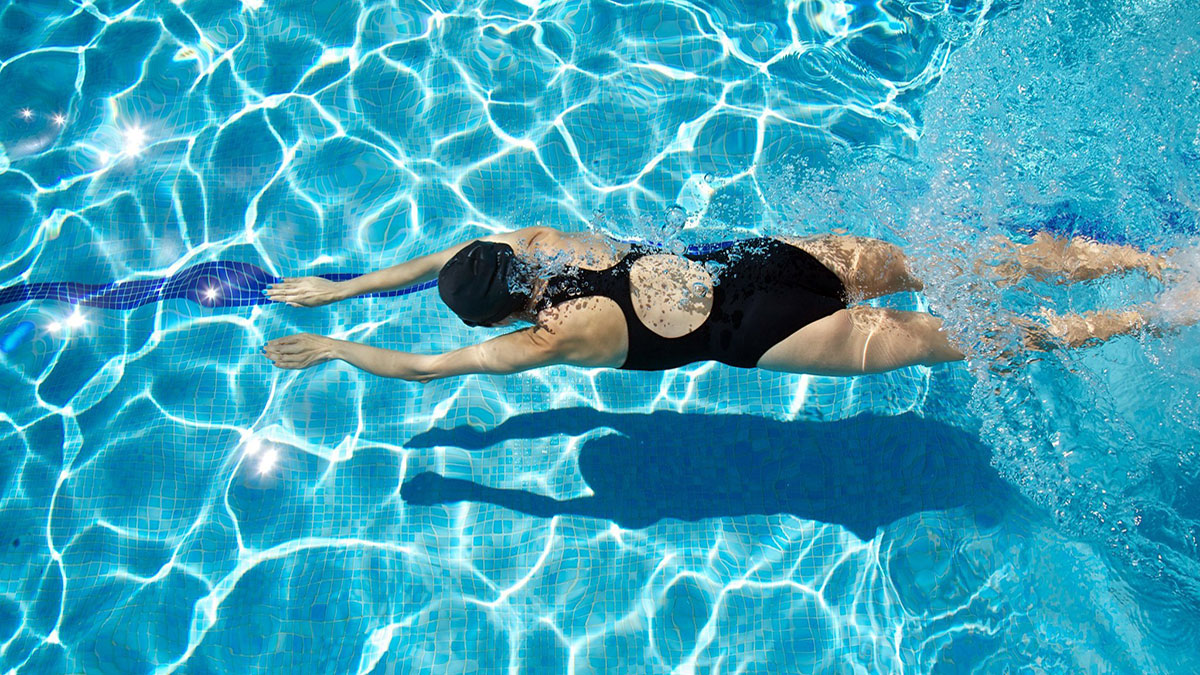Swimming is a complete exercise as it works for both body and mind. Also, it is good for people of all ages. It can even help children with cerebral palsy.
Cerebral palsy is a disability that affects about 4 kids in 1000 newborns. Children with CP have difficulty moving their limbs. Swimming can help them improve their motor functions in the long run.
Here’re 10 health benefits of swimming

- It helps in weight loss as you can burn more calories with swimming exercises. Also, it will make burning calories a breeze for you.
- It builds bone strength and provides long-term relief from common joint problems like arthritis. It is more helpful for aging people that are susceptible to bone loss.
- It is a blessing for people living sedentary life as they are in the high-risk zone of getting heart attacks. But they can improve their cardiovascular health with swimming.
- It improves flexibility in bones and joints. You will feel more energetic after every swimming session.
- It improves body coordination as it involves the movement of hands, legs, chest, and back muscles to propel the body forward.
- It increases neurogenesis that reduces the risk of brain cell death that could lead to temporal lobe epilepsy. A study on laboratory rats proved that swimming works on the brain.
- It improves asthmatic conditions. Swimming can reduce the occurrence and severity of asthmatic attacks among asthmatic people. Also, it can prevent the development of asthma in healthy people.
- It improves sleep quality. Swimming is a complete exercise for the entire body. It makes all the muscles and brain cells work. It will make you feel exhausted so you can sleep better.
- It supports mental health by making the brain cells work. Your intelligence level will increase after starting swimming.
- It slows down the aging process. Since it works for the entire body, you can expect good results on your overall health that will make you healthier in the long run.
Swimming is a great exercise and you will be surprised to know that you can choose an exercise that you are comfortable with. Swimming can largely be categorized into six exercises according to position and hand movements.
- Freestyle

Beginners should start with freestyle swimming as it provides immense flexibility to move your hands and feet to kick the water.
How To:
• Jump in the pool with your face down and hands extended above your head
• Take your right hand in the water, push the water back, and bring it to the starting position
• Now push the water back with the left hand
• Be quick in pushing water back with your hands one-by-one to move forward
- Backstroke

Here you float on your back just like you lie on a bed and use your hand movements to move forward.
How To:
• Float in the pool on your back with your hands
• Lift your right hand out of the water and move in a clockwise circle into the water
• Push the water with a splash of the right hand
• Now do it with the left hand and move forward
• Increase the speed of splashing to bring speed to your movement
- Breaststroke

In breaststroke, you lay on your chest and push water with hand movement up to your breasts.
How To:
• Float in the pool on your chest with your face down and hands extended over your head
• Join your palms and push the water back towards your chest
• Push yourself ahead while pushing the water back
• Take your hands to the starting position from your chest
• Increase the speed of hand movement to boost your speed
- Butterfly

It is a challenging position because it involves both hand and head movement to improve speed and performance.
How To:
• Float in the pool with your face down and hands extended above the head
• Bring your hands down in the pull and move both hands in a semicircular motion
• As your hands touch your body, take them to the first position
• Your legs should be straight and locked like a mermaid
• Kick the water downwards with your hand movement
• Increase the speed of your hand movement and kicks to swim fast
- Dog Paddle

It is a simple yet advantageous exercise. In dog paddle, you make slow movements and it works for the entire body.
How To:
• Float in the pool with your head out of the water
• Move your hands and legs alternatively to push the water back
• Start slowly so you do it right and attain speed and perfection
- Sidestroke

It is for fast movement and quick exercising. It can burn more calories than others. Also, it improves balance and tones muscles.
How To:
• Jump in the pool and come to your right side with your right hand extended over the water and left hand straight
• Tilt your head a little and look sideways
• First, bring the right arm in the water and push the water back
• Second, turn left and repeat the movement with your left hand
• Keep your legs straight move your legs in a circular motion like cycling and be quick to bring speed to your movement
Swimming is a great exercise, but you should be careful about the injuries you could inflict on your body while swimming. Do the following things before jumping into a pool to avoid injuries.
• Warm-up and stretching are necessary before swimming. It is so because you need the flexibility to keep floating
• Cool yourself down and again stretch your body after a successful swimming session
• Prepare a general program to develop your functional strength
Final Thoughts
Swimming is a great exercise as it works for the entire body and mind. But the biggest advantage of swimming is that it doesn’t drain energy. On the contrary, you will feel fresh and energized after a swimming session. The only thing you need to remember while swimming is to prevent injuries by taking all necessary precautions by wearing goggles and earplugs to prevent water from entering your ears.
Disclaimer: The above information is for educational purposes only and readers are advised to take proper training before swimming.
For more information please visit our site at https://searchom.com/

